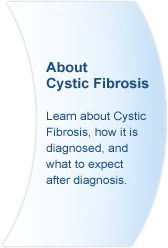Choosing Your Health Plan

To explore your coverage options and find out which private insurance plans, public programs and community services are available to you, go to:
www.healthcare.gov.
Coverage can vary widely between plans, so it is important to make the best choice whenever you have an opportunity to switch plans. When evaluating plans, there are several important points of comparison.
Download this important document with what you need to know about your insurance coverage.
Opportunities to Switch Plans
If you are looking to change your health plan, opportunities often are available during transitions, such as changing jobs or getting married. Many companies also have annual re-enrollment, which is an opportunity to change plans if the employer offers choices.
How to Compare
Obtain a copy of every plan that is available to you. Read each one thoroughly and identify the terms on key benefits such as hospital visits, freedom to choose doctors and hospitals, drug payments, co-pays, and deductibles. Compare the benefits to determine which plan provides the most coverage toward the treatment you or your family member is likely to receive. Also be sure to check and compare each plan's coverage exclusions.
Premium
The premium cost should not be the deciding factor in your choice. A plan that costs less to purchase could cost you more over time in non-covered costs that you have to pay out of pocket.
Access to Care
Look for a plan that allows you to use your preferred doctors and hospitals without out-of-network charges.
Coverage for Dependent Adult Children
Check how each plan covers adult dependent children.
Changing Benefits
Do not assume that your benefits will be the same from year to year if you stay with the same provider. Ask about changes during the re-enrollment period.
Co-Payments
With frequent medical visits and prescription refills, patient co-payments can add up. Look at the co-payments that each plan requires for visits and prescriptions. Many plans cover only select drugs or vary the co-pay depending on whether you choose generic drugs. Make sure the drugs you require are covered. Some plans only pay a fixed percentage of your prescription costs, which can be very expensive option if you use expensive medicines. If you are not using generics now, find out if they are available.
Claim Payment
Find out how your plan pays benefits. Some plans require you to complete paperwork to get paid. Others require that you pay the bill and then apply for reimbursement. Some plans require you to get prior authorization before treatment. If there is a time limit for applying for reimbursement, be sure you know what it is.
Caps on Benefits
Many plans have annual or lifetime limits on how much they will pay for medications, physical therapy, medical equipment and more. CF care can be very expensive, so be sure you understand any coverage limitations.
Pre-Existing Condition
Some health plans categorize CF as a pre-existing condition. Entering such a plan could leave you without coverage.
Choice of Providers
Check to see if the providers you use are part of the plan's network. If they are, you should be able to visit them at minimal cost. If they are not in the plan, determine the costs for using non-network providers and determine how much you are likely to spend on care visits.
[ Back to top ]
Comparing Health Insurance
|
Insurance A With set co-pay |
Insurance B With percent co-pay |
Set co-pay
vs.
percentage |
You pay...
• $30 for brand drug
• $15 for generic drug
|
You pay...
• 50% of the brand price
• 10% of generic price
|
Low-deductible vs.
high-deductible
|
Low deductible
You pay...
• $500/year deductible
• Co-pays do not apply to the deductible
|
High deductible
You pay...
• $3,000/year deductible
• Co-pays do apply to the deductible
|
Coverage of services
|
CF Care Center in network
You pay...
• $15 co-pay for each visit
|
CF Care Center out of network
You...
• Pay for each visit
• Are reimbursed 50% of out-of-pocket expenses for each visit
|
[ Back to top ]
Paying for Medications
Every health plan has a medication list, known as a
drug formulary, which they want patients to use. Insurers update these lists often, and they might want you to purchase from particular pharmacies. There are three primary types of drug formularies.
Open or Voluntary: These are simple lists of drugs that insurers would like doctors to prescribe. Your doctor can prescribe anything, and the insurance will cover it.
Closed: In a closed formulary (which is rare), the insurance company chooses a limited number of drugs that it will cover. Drugs not included on the list are considered non-formulary and are not covered. If you need a non-formulary drug, you will have to work with your doctor to get an approval from your insurance company. This is called an exception process.
Tiered or Preferred: All drugs are covered, but there are tiers of co-pay level for different drugs. For example, a generic drug might have a $5 co-pay, while a "preferred" brand might have a $20 co-pay and a non-preferred brand a $35 co-pay.
[ Back to top ]
Tiered and Preferred Formularies
|
Classification |
Formulary Designation |
Dollar Co-Pay |
Percent Co-Pay |
| Tier 1 |
Generic Drugs |
Generic |
$5 to $20 |
10% to 20% |
| Tier 2 |
Limited Branded Drugs |
Preferred Brand |
$20 to $50 |
44% to 50% |
| Tier 3 |
All Other Branded Drugs |
Non-Preferred Brand |
$35 to $75 |
20% to 50% |
[ Back to top ]


 To explore your coverage options and find out which private insurance plans, public programs and community services are available to you, go to: www.healthcare.gov.
To explore your coverage options and find out which private insurance plans, public programs and community services are available to you, go to: www.healthcare.gov.






